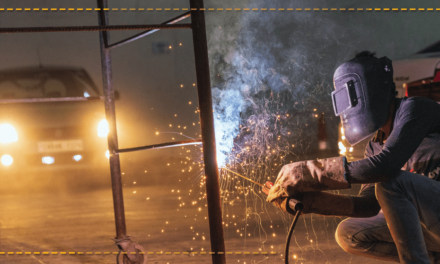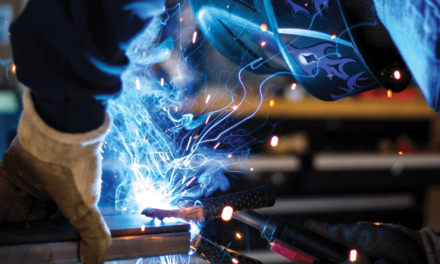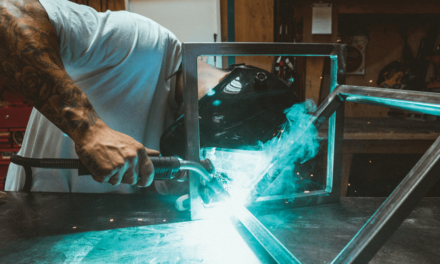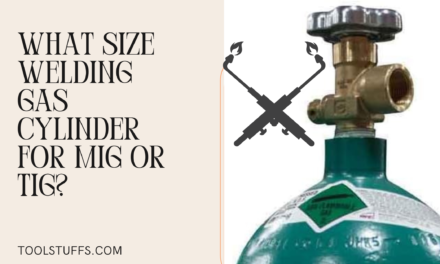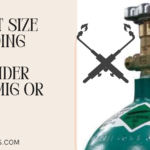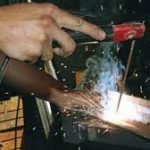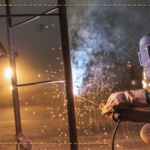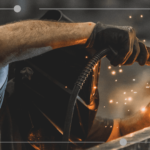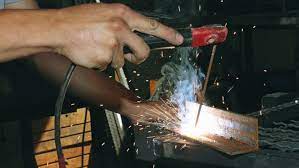
If a cast-iron machine owner cracks or breaks a key cast part, it’s a nightmare. It can cost thousands of dollars to buy new parts or hundreds of dollars to hire someone who knows how to weld cast iron. You can choose either option, but if you know how to weld and are willing to learn a new skill, welding it yourself could be just as easy and solve your problem.
Cast iron is one of the hardest things to join together with a welder. If you do something wrong, your broken part could get even worse, or your weld could look strong even though it isn’t strong inside. So, it’s more important than ever to know what you’re doing. If you follow a set of rules for how to weld cast iron, you should be able to make sure that your welds don’t have any cracks and that the strength inside is enough for the part’s purpose.
Table of Contents
How to Tell What Kind of Cast Iron It Is
In this kind of welding, the first step is to figure out what kind of cast iron it is. There are many kinds, and most of them won’t be good to weld. Here is a list of how easy they are to weld:
- Gray iron is difficult to weld.
- White iron is almost impossible to weld.
- Ductile iron can be welded, but it’s rarely done because the process is long and slow.
- Don’t weld malleable iron because welding changes the way the metal works, making it useless.
If it’s not written on the material, the best way to find out what kind of cast iron needs welding is to look at the product manual or call the manufacturer. Fresh cracks in the material look a little different, but if you’re not sure how to tell the difference, it’s best to ask the manufacturer.
Gray cast iron is the most common type of cast iron that is welded. If you don’t know how to cast or weld cast iron, you should only try to weld gray cast iron. Getting help from someone with experience is also a good idea.
Choose the way to weld:
After figuring out that the material is gray cast iron, the next step is to decide how to weld it. You can use any welding method to join cast iron, as long as you use the right filler material and welding method. There are a few things to think about when welding cast iron, but mostly it comes down to personal preference.
If you need to fix a machined surface by welding, TIG welding is the best way to do it. Spatter from MIG or stick welding might damage parts of the machined surface that aren’t even being welded. You shouldn’t have any trouble with spatter when TIG welding.
Oxy-acetylene welding is another way that cast iron is often joined. It’s a good way to reduce the extreme heating and cooling caused by electric welding, and it makes it easier to keep the parts at the same temperature.
Brazing is not the same as welding because it doesn’t melt the metal together like welding does. But it’s a good choice if you can’t weld it for whatever reason. Make sure the iron surfaces where the brazing will go are clean. It won’t stick to iron that is dirty or rusty.
Stick welding and MIG welding are both good choices if you have the right tools and materials. If you use the wrong filler metal, it will probably crack, so make sure it’s the right one before you try to weld cast iron.
Pick either the filler wire or the electrode.
Cast iron can only be welded with a small number of filler wires and electrodes. Most of the ones that aren’t made specifically for cast iron cool too quickly and cause stress cracks or don’t fuse properly with the cast iron.

Electrodes and wires that are used up:
Nickel in large amounts: This type of electrode or wire is the best because it is soft and easy to work with. It doesn’t cool down too fast and looks just like cast iron. But these are the most expensive consumables and aren’t good for welding thick sections.
55 percent nickel, 45 percent iron mix: This is less expensive and looks the same when welded as cast iron. It makes a weld that can be machined, but it is much harder than a 99 percent nickel weld. It cracks less than most iron rods because it doesn’t shrink as much when it’s welded.
Iron: This type costs less than cast iron and makes a different color weld. It is much harder to use because it shrinks more than other fabrics. It can’t be machined because it gets hard when it’s welded, but it can be ground back to shape.
Cast iron is fused with austenite to make stainless steel. Stainless steel doesn’t get as hard or change its properties as much as iron does. The welding process heats and cools the stainless steel, which causes it to expand and contract a lot. This makes it hard to use. But it is used to weld cast iron and makes a surface that can be cut.
For brazing bronze, you can use oxyacetylene or TIG welding rods. It’s a good way to give a stronghold in a crack or between two parts that need to be joined, without making the cast iron crack or change its properties.
Cleaning and Peening Weld Surfaces
Like most things you weld, the better your welds will be if the surface is clean. Sometimes the material you’re welding has oil or fumes that have been there for a long time, which can make welding difficult. When you weld cast iron, you need to be aware of a few things.
The best way to make sure the weld is strong enough is to use welding supplies, like MG-289 Cast Iron Welding Alloy rods, that are made for contaminated cast iron.
Peening means tapping the soft weld with a ball-peen hammer as it cools to keep it from cracking. This should be done carefully and only when the weld can bend, but it isn’t always necessary because most cracks are caused by the part heating or cooling too quickly or unevenly. The most important thing is to get your project hot and then let it cool slowly.

Preheat or Cold-Weld?
People have different ideas about whether you should use hot or cold welding. Everyone agrees that preheating is a good idea, but some say that welding with less heat is also good enough.
When deciding how to weld cast iron, you have to choose one of these methods. Unlike most metals, cast iron is brittle and doesn’t change much when bent or when it expands and contracts. Heat always changes the shape of metal, and if one part of the metal heats or cools faster than another, the cast iron or weld will become stressed and crack.
This effect is lessened by preheating, which brings the area around the weld closer to the welding temperature. This makes the whole part change at the same rate. Cast iron changes when it gets hotter than 1400 degrees Fahrenheit, so it’s important not to heat it too much.
People think that lowering the overall temperature by welding cast iron without preheating and with only a small amount of heat will help. This can help avoid cracks that are easy to see and make the weld stronger than a hot weld without preheating. But there is still internal stress, which can show up later in the life of the part, and the weld is weaker than if it had been properly heated before welding.
Cast iron welders with a lot of experience who often fix or make things out of cast iron always and only preheat. This is the best way to make sure that the weld is strong on the inside as well as on the outside.
Cool Slowly
One of the most important steps in welding cast iron is letting it cool down. You should never put something cold like water or compressed air on the weld to cool it down. Instead, it’s better if the whole part cools down slowly.
Some welds need to cool for a long time, but gray cast iron doesn’t need to be as careful. Putting the piece that was welded into sand or a warm oven can help it cool more slowly and evenly than letting it sit on a bench. It can be harder to do this sometimes, but you can still make a good weld without extending the cooling time too much. But the longer it takes to cool, the better the result will be.
Final Words: How to Join Cast Iron Together
It’s not easy to weld cast iron. During the welding and cooling process, it needs a lot more planning and care. But it is a metal that is often welded and can be used to make a strong part that will last as long as a cast product that doesn’t have any welds.
Make sure you follow all the steps for how to weld cast iron, and you will get the results you need for your next project made of cast iron. If you try to cut corners, the weld will probably break or be weak on the inside, and it may not last long.
We hope this guide helps you successfully weld some cast iron. Feel free to leave us your thoughts in the section below.

